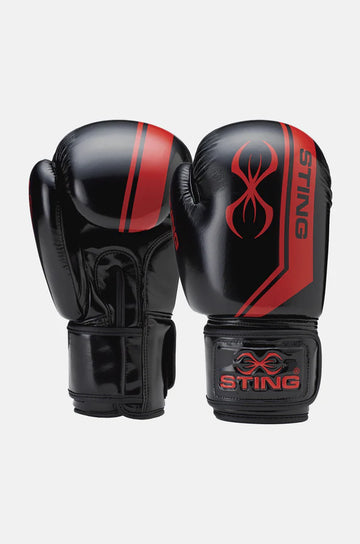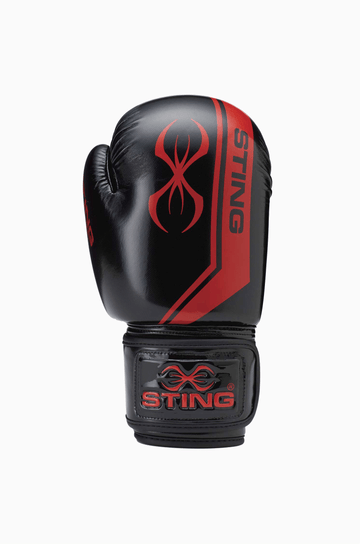The Ultimate Punching Bag Workout: Build Strength, Speed, and Stamina
A punching bag is your sparring partner, stress reliever, and conditioning tool all in one. Regardless of whether you are a beginner or have years of training experience, a proper punching bag workout will give you strength, speed, and stamina. It is not limited to boxers, but anyone can benefit from the intensity and calorie burn from organized punching bag training.
Why Train With a Punching Bag?
Punching bags offer a unique blend of cardio, strength, and skill training. Some benefits include:
-
Builds upper body power through repeated punches and strikes.
-
Strengthens core stability with every rotation and movement.
-
Improves speed and coordination by forcing controlled combinations.
-
Offers a full-body workout that burns calories quickly.
-
Relieves stress; hitting the bag can be therapeutic after a long day.
Punching bags are also helpful in perfecting technique, allowing beginners to learn basic jabs and hooks, and advanced athletes to refine the accuracy required for a fight-level performance.
Always choose the correct type of punching bags for your training goals, the available space in your home or gym, your skill and fitness level, and the bag's weight, material, and type.
Heavy Bag Routines for Beginners
If you’re new, heavy bag workouts should focus on fundamentals. Here’s a simple heavy bag exercise routine to get started:
-
Warm-up (5 minutes): Jump rope or shadowbox lightly.
-
Jabs and Crosses (3 rounds, 2 minutes each): Pay attention to proper position, alignment, and snapping punches.
-
Hooks and Uppercuts (2 rounds): Practice with controlled force.
-
Combination Drills (3 rounds): Mix jabs, crosses, and hooks into sequences.
-
Cool-down: Stretch arms, shoulders, and hips.
This structure maintains your rhythm without overstraining. Increase the length or intensity of the round as your fitness increases with time.
Advanced Boxing Workout With a Bag
Once you’ve mastered basics, step into advanced combinations and conditioning drills:
-
3-Minute Combos: Throw fast-paced jabs, crosses, hooks, and uppercuts with footwork for 3-minute rounds.
-
Power Rounds: Hit the bag at maximum power for 30-second bursts followed by 30 seconds of lighter punches.
-
Defensive Drills: Incorporate slips, ducks, and rolls while throwing counter punches.
-
Endurance Burnout: 5 straight minutes of non-stop punching to push stamina.
This level of training simulates real fight intensity while pushing strength and cardiovascular endurance.
Weekly Punching Bag Training Schedule
|
Day |
Focus |
Workout Example |
Duration |
|
Monday |
Technique |
Jabs, crosses, hooks |
30 min |
|
Wednesday |
Strength |
Power punches, slower pace |
30–40 min |
|
Friday |
Speed & Stamina |
Fast-paced combos |
25–30 min |
|
Saturday |
Mixed Routine |
Combine all skills |
40 min |
This rotation balances skill-building with conditioning, giving you progression week after week.
How to Track Progress in Your Punching Bag Workout
Training on punching bags is not only concerned with hitting harder, but also with achieving quantifiable benefits. Being able to track your progress will motivate you. You can record the number of rounds done, total time spent in the workout, or rest time between sets. Endurance can be monitored with the assistance of a timer application, and the number of punches can be tracked to provide information on speed and accuracy.
Technique, footwork, and rhythm can also be studied using video recording sessions. Over time, you can compare your recordings and identify what is improving, as well as the habits you would like to change. These small but steady targets will provide a clear path forward to achieve the desired boxing fitness.
Combining Punching Bag Training With Fitness Goals
Different fitness goals require small workout adjustments:
-
Weight loss: Short, explosive intervals to burn maximum calories.
-
Strength building: Slower, more powerful punches for resistance.
-
Cardio fitness: Fast-paced combos for sustained periods.
-
Boxing technique: Structured combos with defensive movements.
By adjusting speed, intensity, and routine structure, your heavy bag routines for beginners can evolve into advanced conditioning workouts. If you have limited space, consider punching bags for small spaces and home gyms.
Common Mistakes to Avoid During a Punching Bag Workout
Even though punching bag exercises may provide astounding outcomes, small mistakes made by many beginners can hinder their development or even cause more harm. Some key mistakes include:
-
Overcommitting power: Throwing every punch at maximum force can cause shoulder or wrist strain. Focus on technique first.
-
Neglecting footwork: Staying flat-footed reduces speed and stamina. Move around the bag as if facing a real opponent.
-
Skipping warm-ups and cooldowns: Without proper stretching and mobility drills, your muscles are more prone to fatigue and injury.
-
Ignoring rest periods: Training without breaks can lead to burnout. Short rests between rounds improve consistency.
-
Not wrapping hands properly: Without secure wraps, repeated impact may injure your wrists or knuckles.
Final Thoughts
A boxing punch bag workout is one of the most dynamic exercises, which combines cardio, strength, and skill training. Beginners can use simple combinations, while advanced athletes push stamina with power and endurance drills. Through regular training, good form, and organized practices, the punching bag becomes more than equipment and the basis of your power, speed, and endurance program.
Need more training? Check out the high-quality punching bags and other equipment at Sting Sports to help you develop power, speed, and endurance at all stages of your boxing career.
FAQs
Q1: How many minutes should a beginner practice on the bag?
Begin with 20 to 30 minutes, two to three times a week. Increase as stamina builds.
Q2: Do I have to wear gloves and wraps every time I exercise?
Yes. Wraps cover wrists, and gloves lessen the stress on the knuckles.
Q3: Will a punching bag workout help me lose weight?
Absolutely. Bag training is a high-intensity cardio that burns 400-600 calories per hour.





























